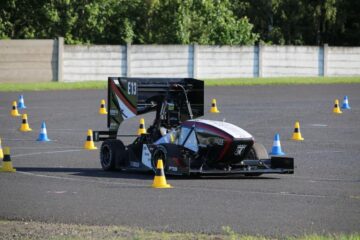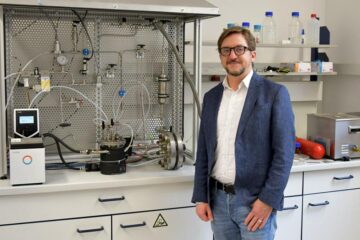Eating soy during adolescence may reduce breast cancer

University of Southern California study shows link between diet and cancer in Asian-American women
Eating soy foods on a regular basis-especially during adolescence-might lower the risk of breast cancer, according to preventive medicine researchers at the Keck School of Medicine of USC and colleagues.
Asian-American women who consumed soy foods on a weekly basis during their teen years and adulthood had about half the risk of developing breast cancer compared to similar women who ate little soy during the same time periods, according to a study in the September issue of Carcinogenesis.
Risk also was somewhat lowered for women who ate soy regularly during the teen years but consumed little during adulthood. However, preliminary data suggest little added benefit for women who ate little soy during adolescence but a high amount of soy during adulthood.
„There has been a lot of talk and controversy about the Asian diet and connections between soy food intake and breast cancer. We wanted to look at soy very carefully, to better understand if soy by itself is protective or if the level of soy consumption is just a marker for acculturation,“ says Anna H. Wu, Ph.D. professor of preventive medicine at the Keck School of Medicine.
Wu and colleagues conducted a case-control study of breast cancer among Chinese, Japanese and Filipino women in Los Angeles County, specifically looking at the importance of soy. From 1995 to 1998, they interviewed 501 Asian-American breast cancer patients and compared them to 594 healthy Asian-American women.
The researchers asked about eating habits, including how many times each week during adolescence they ate tofu. They also asked about the frequency and amounts of whole soy foods, such as tofu, soymilk, miso and fresh soybeans, usually eaten during adulthood.
Intake was highest among Chinese (26.8 milligrams of isoflavones a day), intermediate among Japanese (18.4 mg of isoflavones a day) and lowest among Filipinas (9.3 mg of isoflavones a day). Migrants ate a little more soy than American-born women did. Most of the Chinese and Filipino women in this study-more than 90 percent-were born in Asia, compared to less than 30 percent of the Japanese women.
When women were grouped by how often they ate soy during adolescence and adult life, researchers found that women who were high consumers during both time periods had a 47 percent reduction in risk. Those who ate little soy during adult life but were regular soy consumers during adolescence showed a 23 percent reduction in risk Women who were low consumers during adolescence and high consumers during adulthood showed little reduction in risk. However, the number of such women was small, and researchers note that larger studies must be conducted to confirm this result.
So how does soy work? Scientists are not sure, but they have some ideas.
Animal studies indicate that early life exposure to genistein-the main isoflavone in soybeans-seems to help protect against chemically induced breast tumors. Getting genistein early in life may help the mammary glands develop in a favorable way.
Eating soy might also lead to lower levels of estrogen circulating within the body, some theorize. And some studies show that genistein seems to inhibit some enzymes that are important in metabolizing estrogen.
Regardless of the protective mechanism, Wu notes that if the mounting soy research shows promise, many may ask, „How much soy is enough?“ There may be a point at which eating more soy does not further reduce risk, she says. Researchers are still seeking to understand the relationship between soy food dose and risk reduction, though in this study the greatest risk reduction was seen among women with the highest level of consumption: 12.68 mg or more of isoflavones per 1000 kilocalories during adulthood and eating soy foods four or more times a week during adolescence.
Isoflavone levels in soy foods vary considerably, but a serving of store-bought tofu-a quarter of a box-contains about 10 mg of isoflavones, Wu says.
Wu notes that a much larger study is needed to sort out the benefits of adult soy food intake and what levels of soy intake are most helpful. Her study looked only at traditional soy foods, not at genistein or other isoflavones that may be contained in pills and supplements.
Media Contact
Weitere Informationen:
http://uscnews3.usc.edu/experts/index.htmlAlle Nachrichten aus der Kategorie: Medizin Gesundheit
Dieser Fachbereich fasst die Vielzahl der medizinischen Fachrichtungen aus dem Bereich der Humanmedizin zusammen.
Unter anderem finden Sie hier Berichte aus den Teilbereichen: Anästhesiologie, Anatomie, Chirurgie, Humangenetik, Hygiene und Umweltmedizin, Innere Medizin, Neurologie, Pharmakologie, Physiologie, Urologie oder Zahnmedizin.
Neueste Beiträge

Ideen für die Zukunft
TU Berlin präsentiert sich vom 22. bis 26. April 2024 mit neun Projekten auf der Hannover Messe 2024. Die HANNOVER MESSE gilt als die Weltleitmesse der Industrie. Ihr diesjähriger Schwerpunkt…

Peptide auf interstellarem Eis
Dass einfache Peptide auf kosmischen Staubkörnern entstehen können, wurde vom Forschungsteam um Dr. Serge Krasnokutski vom Astrophysikalischen Labor des Max-Planck-Instituts für Astronomie an der Universität Jena bereits gezeigt. Bisher ging…

Wasserstoff-Produktion in der heimischen Garage
Forschungsteam der Frankfurt UAS entwickelt Prototyp für Privathaushalte: Förderzusage vom Land Hessen für 2. Projektphase. Wasserstoff als Energieträger der Zukunft ist nicht frei verfügbar, sondern muss aufwendig hergestellt werden. Das…





















